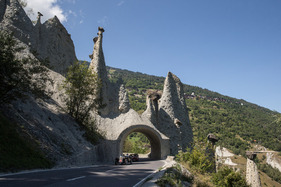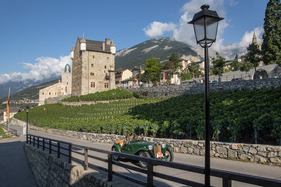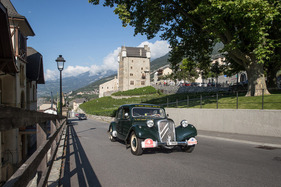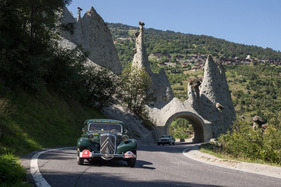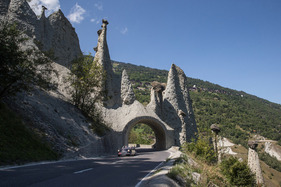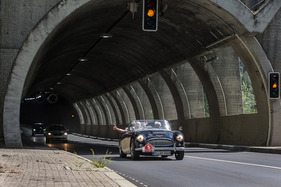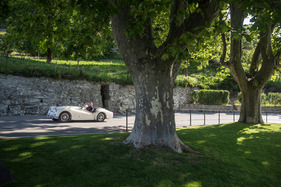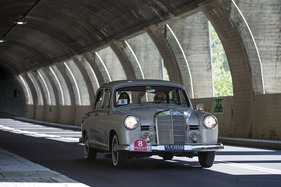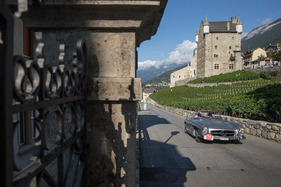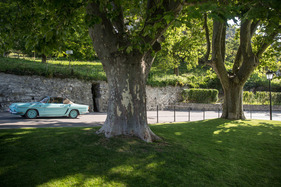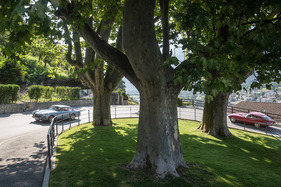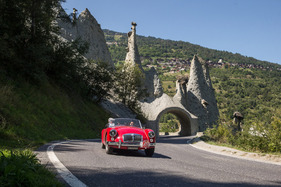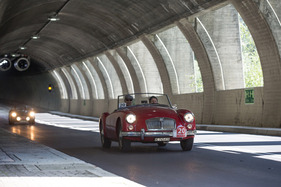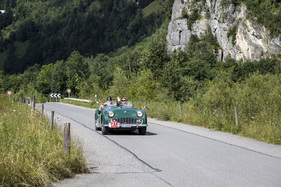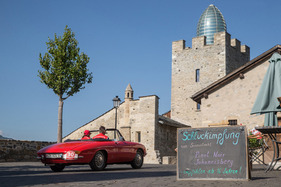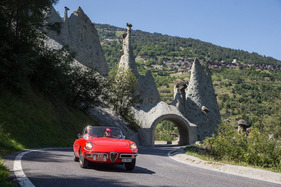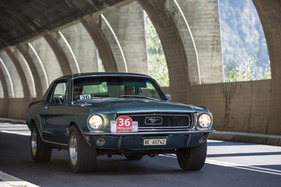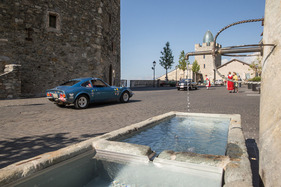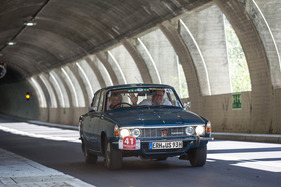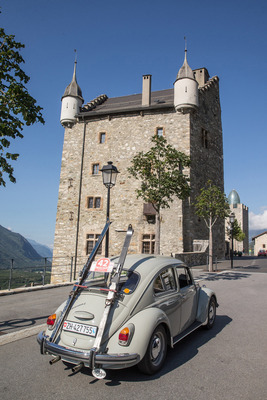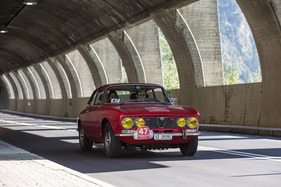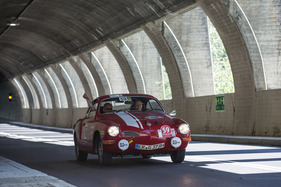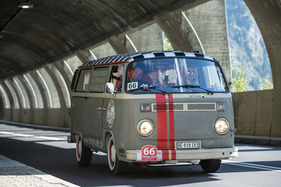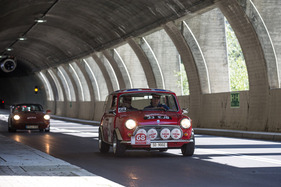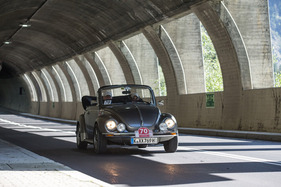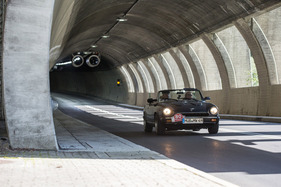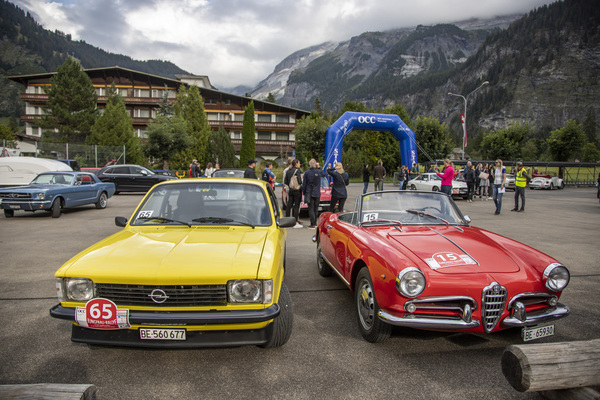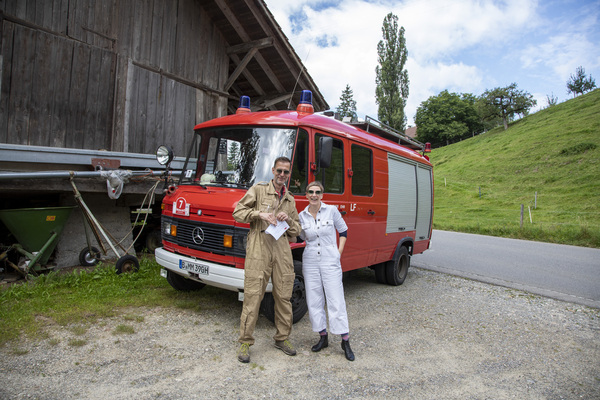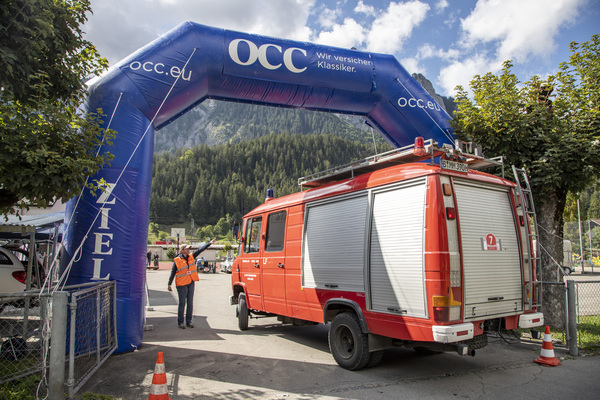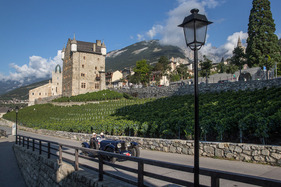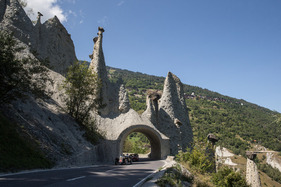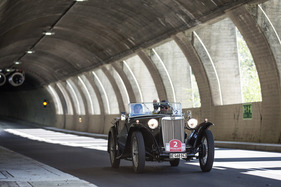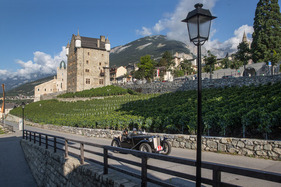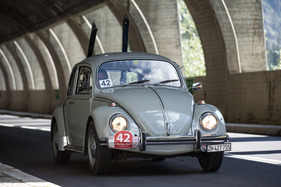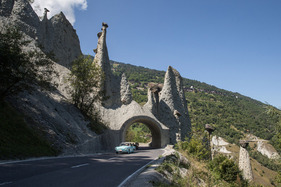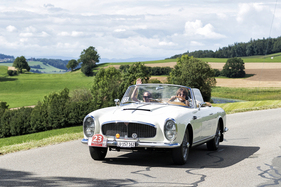The 2021 edition of the OCC Jungfrau Rally took place on August 27/28, 2021 and had its starting point in Kandersteg in the Bernese Oberland. It ran under the motto "The Jungfrau and the Blümlisalp". Although the two mountain ranges were somewhat hidden in the clouds at times, the weather was otherwise perfect for a classic car rally: no rain, plenty of sunshine, but not too hot either.
There were 91 classic cars from the years 1936 to 1991 at the start, with teams from Switzerland, Germany, Italy, Austria and Portugal. As always, only ladies were allowed at the wheel; men were only allowed in the co-driver's seat, as stipulated for the Jungfrau Rally.
Wide range of vehicles
This time, the vehicles came from six different decades, from the pre-war period to the early 1990s.
In between, there was a wide range of vehicle types and brands on display, from an Austin-Healey to a Ferrari 250 GTE and a Triumph Spitfire.
Many former bread-and-butter cars, including of course the indestructible Beetle, were also at the start.
And there was no shortage of real exotics either, including an AMC Marlin, an Alvis TE 21 Graber, a Lancia Flaminia Zagato and a Panther Kallista.
Elaborate logistics
The first of the two daily stages led to Valais. The 91 classic cars were transported from Kandersteg to Goppenstein by several car transporters. This was a logistical challenge, as the capacity of the BLS car loading area is still limited due to the renovation work in the tunnel. In the end, however, the transport went smoothly and there were only minor delays.
Two varied routes
The start took place in Gampel. The teams then rode via Leuk, Lens and Conthey to Veysonnaz. On the way, the route led through several historic village centers and along old roads lined with dry stone walls and vines.
In the afternoon, the route finally took us past the famous pyramids of Euseigne to St. Martin and Nax and from there back along the valley floor to Goppenstein.
Saturday's stage took place in the canton of Bern and included a loop around Lake Thun in the morning and a tour over the Belpberg in the afternoon. Although the Blümlisalp as the "protagonist" was only partially visible, as mentioned above, there were other views, such as of Lake Thun, Lake Gerzensee and the Stockhorn mountain range.
Skill required
The teams also had their work cut out for them on both days - they had to complete various intermediate tests. In addition to light barrier tests, they had to find signs and maneuver the vehicle as accurately as possible. It was also important to know your own vehicle well: at one station, the teams were given the task of drawing a line on a piece of paper whose length corresponded exactly to the inside diameter of the exhaust tailpipe on their car.
The drivers and their navigators usually mastered these tasks quite well, and the vehicles also held up better than in other years: There were only two complete breakdowns due to technical reasons. In one case, the team was able to continue the rally on the following day with its towing vehicle, as it had been built in 1985 and was therefore old enough to take part.

It was a former fire engine, which naturally caused a stir on the road.
Four at a time
The evaluation of the test results revealed something quite unusual: the Reusser/Reusser team took four trophies with their Ford Mustang, i.e. both stage wins, the main win and the prize for the best light barrier team. This has only happened once before in the history of the OCC Jungfrau Rally.
The Vanini/Hurkmans team won the women-only team classification with their BMW 3 Series.
The 2022 edition of the OCC Jungfrau Rally will once again take place in the Bernese Oberland, with details to be announced by the organizers in the autumn.






